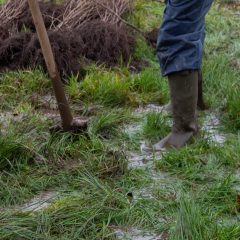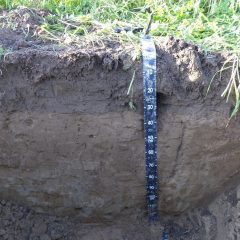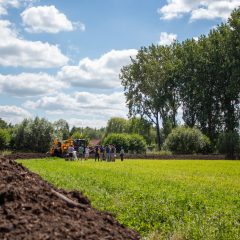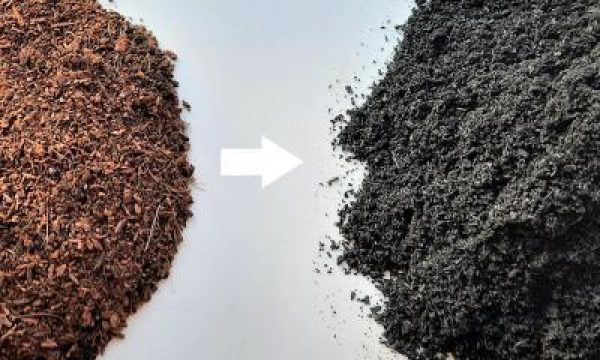Dossier Drought tolerant crops
Climate change means that we are increasingly faced with drought during the growing season, including in Flanders. This requires a systematic approach to water in agriculture, in which the use of drought-tolerant crops plays an important role.

What does ILVO do?
-
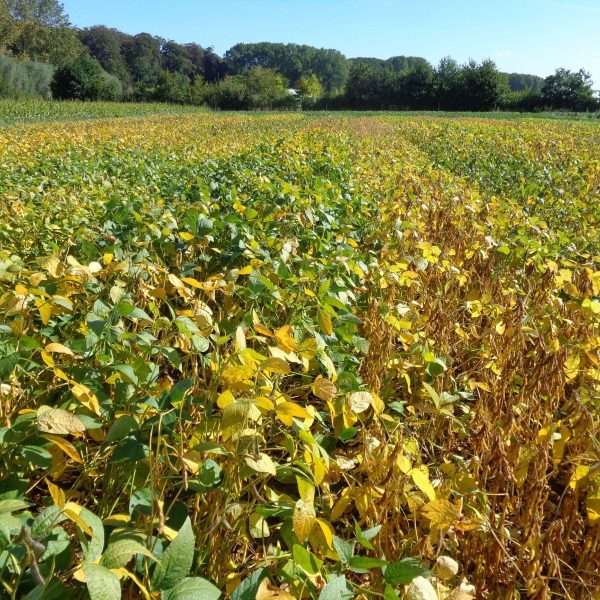 ILVO studies the genetic and physiological basis of drought tolerance in various crops (soy, red clover, perennial ryegrass).
ILVO studies the genetic and physiological basis of drought tolerance in various crops (soy, red clover, perennial ryegrass). -
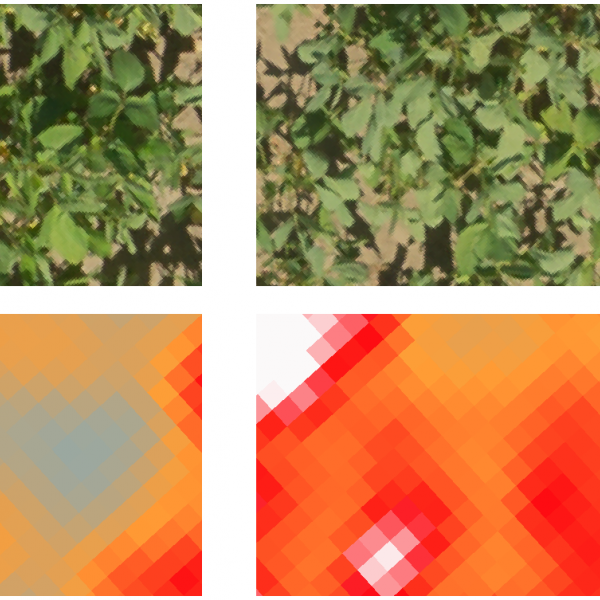 ILVO uses drones to spot drought-resistant plants on the field using thermal and other types of imaging.
ILVO uses drones to spot drought-resistant plants on the field using thermal and other types of imaging. -
 ILVO develops new varieties with higher drought resistance with a focus on perennial ryegrass, red clover, and soy.
ILVO develops new varieties with higher drought resistance with a focus on perennial ryegrass, red clover, and soy. -
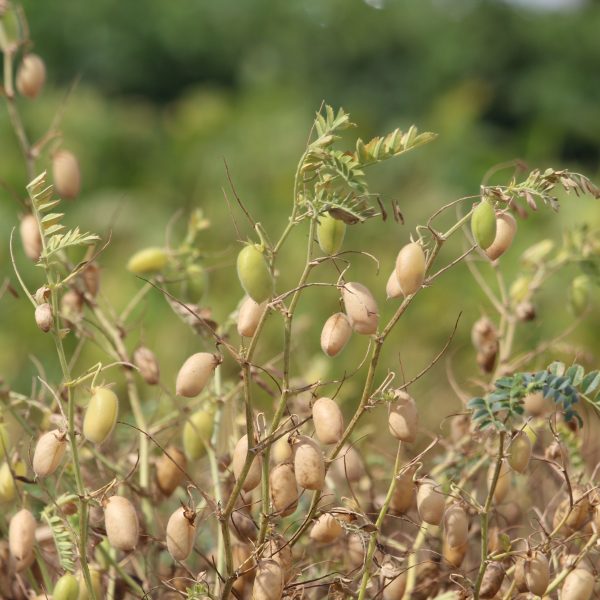 ILVO studies the cultivation possibilities and the potential for Flanders of drought-resistant crops like quinoa, chickpea, and sorghum..
ILVO studies the cultivation possibilities and the potential for Flanders of drought-resistant crops like quinoa, chickpea, and sorghum..
Why is water important for the plant?
Plants absorb water with their roots, but 90% of this water ‘disappears’ through evaporation along the stomata on the leaves. However, this so-called ‘loss’ has an important function: through this evaporation, plants cool their leaves in order to protect fundamental plant processes, such as photosynthesis, from overheating.
In addition, water plays a crucial role in the growth of the plant; because of the internal ‘water pressure’ – called turgor – plant cells grow and so does the plant as a whole. This internal water pressure is created by the interaction between the absorption of water through the roots and the loss of water through the leaves. Just think of wilted plants; these are no longer ‘under pressure’.
Lastly, a lot of nutrients are also absorbed and distributed within the plant via the internal water transport system.
Why are some plants more resistant to drought than others?
Differences in the genetic code between plant species or varieties result in differences in morphological or functional characteristics (i.e. phenotype). For example, a maize plant is clearly different – morphologically speaking – from a wheat plant. However, some differences are more subtle or invisible, but can contribute to specific benefits in dry conditions.
- For example, in times of drought, plants with deeper root systems will still absorb water from deeper soil layers in order to maintain their evaporation and growth.
- In addition, plants can also close their stomata to reduce excessive moisture loss. This is accompanied by reduced photosynthesis (after all, stomata are also the entry point for CO2 uptake, which is necessary for photosynthesis) and reduced cooling.
- Other strategies, such as the curling up of leaves, leaf hairs, etc. are aimed at reflecting the incoming solar radiation, so that the leaf heats up less quickly.
Drought-resistant grass
Less drought-resistant grass
In nature, drought resistance in nature is often linked to lower productivity
There are countless possibilities for a plant to adapt to drought, but very often drought tolerance is linked to lower productivity. An extreme example of this is desert plants. They remain in stasis for long periods of time, waiting for that one rainstorm, after which they rapidly activate and produce reproductive structures and then go back to a sort of stasis. This way, they can survive very well in extremely dry conditions, but they have little value from an agricultural point of view, as their productivity is usually very low. Of course, such extreme tolerance mechanisms are less useful for Flemish agriculture.
Breeding for new, drought-tolerant, high-yielding plants?
One way to empower agriculture to cope with climate change, such as more frequent and longer periods of drought, is to develop varieties that are more drought-tolerant than the current varieties. This can be done through breeding.
Breeding is a continuous process in which new, better, or adapted varieties are developed within certain crops (including plant species). For example, perennial ryegrass (Lolium perenne) is a crop with good feed quality that can be improved in terms of drought through breeding. Alternatively, a more drought-tolerant but less digestible crop, such as tall fescue (Festuca arundinacea), can be bred to a better feed quality.
Breeding is a long process: it takes about 10 years before a new variety makes it onto the market. Moreover, the breeder should observe a large number of plants, especially in the first generations, and select the best plants from these to cross further. Identifying the ‘best’ plants is not always easy and requires a lot of skill.
This figure shows a step-by-step overview of the breeding process, which starts with 10,000 separate plants and ends with 1 new variety.
New technology can help the breeder
ILVO develops technological tools based on a good understanding of why plants are (potentially) resistant to drought. These can help breeders detect the most interesting plant individuals in a large group.
Drones with cameras that see more than the naked eye
More and more drones are being equipped with cameras to monitor certain properties in large numbers of plants or micro-fields. Different cameras are used depending on the application.
- A simple RGB camera (visible light) can measure many interesting features, such as plant height, greenness, and density, provided a well-designed flight plan is in place. Although these are general plant characteristics, they are also affected by drought and can, therefore, help to estimate drought tolerance.
- In addition, a thermal camera (infrared light) can be used specifically for drought. It measures the temperature of the foliage and is, therefore, extremely interesting for finding out which plants have closed their stomata in response to drought. Will the breeder then select the warm or cooler plants? The warmer ones because if they close their stomata, they will lose less moisture but also cool down less.
A visual and thermal image of variation in drought tolerance
Molecular or DNA markers for selection
In addition to drones that identify interesting plants, molecular markers or DNA markers are also used in selection, called ‘marker-assisted selection’ (MAS). The breeder looks for DNA markers that are associated with a certain property in the plant, such as drought tolerance or a certain gene. Afterward, the same markers can be used to identify plants with the desired property.
The big advantage of MAS is that you only need a small amount of plant material per individual, and that you can identify plants with the desired property at a very early stage of growth (seedlings). Moreover, this allows you to screen large quantities of plants for the presence of interesting characteristics relatively cheaply. The downside is that there is quite some research work in the development of the markers, especially in the association of the traits to the genetic code.
Rainout shelters
In order to be able to select for drought tolerance, breeders must let the plants grow in realistic drought conditions. ILVO uses rainout shelters that are placed over the test field for a specific period of time to induce drought in a particular period.
ILVO has mobile rainout shelters that are placed over the test field for a specific period of time to induce drought in that period
New or underutilized species with potential for Flemish agriculture
In addition to the continuous improvement of drought tolerance in existing, well-known agricultural crops through breeding, ILVO also researches the potential of lesser-known, drought-tolerant agricultural crops for Flemish agriculture. Examples are quinoa, chickpea, and sorghum.
Furthermore, some species are already known in the Flemish agricultural context, but that are still underutilized or may gain in importance if we are more likely to suffer from drought during the growing season. Examples are tall fescue and alfalfa.
Also read the dossier on Water in agriculture.
Contact an expert

Research projects



